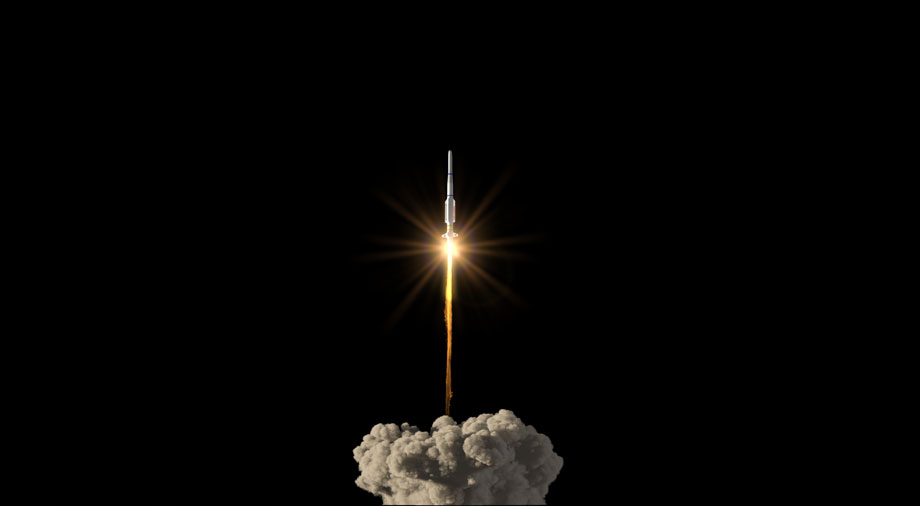After 2022 full of different events, the space industry is not slowing down; on the contrary, it’s also actively seeking to ramp up in 2023. Many missions of both national and commercial significance are expected to be launched this year. Some will showcase brand new types of reentry super heavy-lift rockets, while others will be a breakthrough in exploring the solar system. There is even a place for orbital tourism in outer space. So we have selected the most exciting space missions, which are definitely worth watching in 2023.
Rocket Muscle: Starship and Falcon Heavy
New ambitious projects involving man’s return to the Moon may require the supervisors of space missions to send large volumes of payloads to its surface. This would demonstrate the readiness of man not only to visit our satellite for a second time but also to gain a foothold on it.
The main candidate to bring this idea to life could be SpaceX’s super-heavy, two-stage Starship rocket, which will likely be launched for the first time in late February or early March of this year. On February 9, the company successfully burned 31 of the 33 Raptor V2 engines of Starship’s first stage, the SuperHeavy booster.
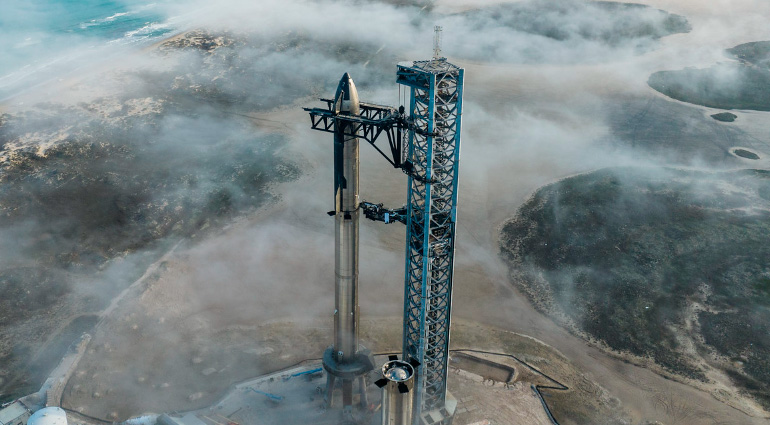
Source: SpaceX
The engineering team decided to leave one of the two failed engines shut down just before the test began, while the other failed to ignite due to an as-yet-undetermined anomaly. Not bad for the test burn, but for the mission’s success, SpaceX will need the proper functioning of all 33 engines of the first stage. If the problem with their sudden shutdown is not resolved, Starship risks pushing back its launch dates again.
Either way, the first flight of Starship is worth waiting for, as if it succeeds, it will be the heaviest payload of any rocket booster currently on the market. Starship has more power than even NASA’s Space Launch System heavyweight, which debuted on November 16 last year when it launched the Artemis I uncrewed lunar mission.
Another workhorse from SpaceX is the supermassive Falcon Heavy, assembled from three modified first stages of the Falcon 9 rocket.
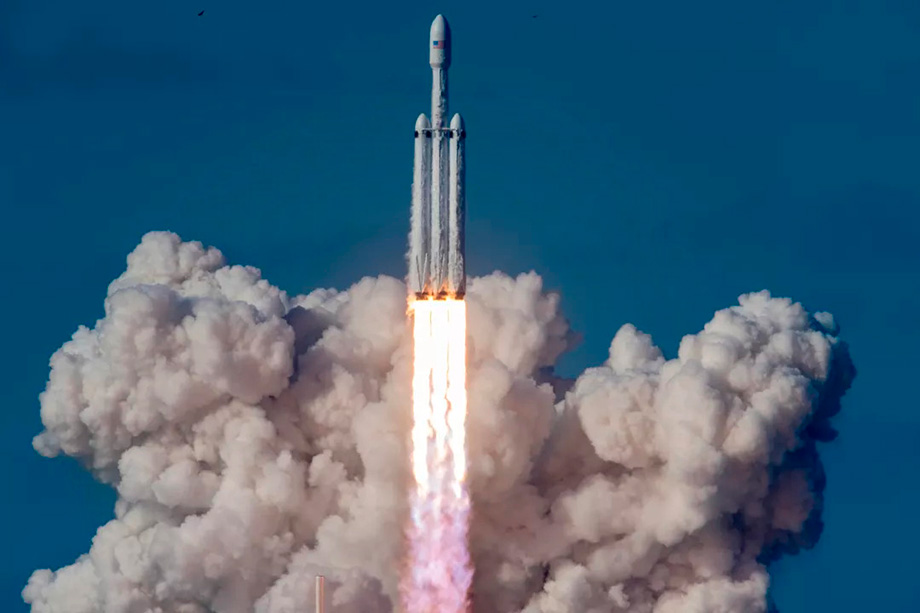
Source: SpaceX
Falcon Heavy made its first 2023 launch on January 15, carrying a secret payload into orbit from Cape Canaveral Launch Pad 39A as part of the USSF-67 mission for the US Space Force. A complete list of the vehicles delivered by the rocket into orbit is not disclosed. Still, it is known that the satellite Continuous Broadcast Augmenting SATCOM 2 (CBAS-2), designed to create channels of encrypted satellite communications for the US military, was on board.
Four more Falcon Heavy launches by SpaceX are planned for 2023. The Psyche space mission should be the most notable, aimed at studying the asteroid 16 Psyche. Falcon Heavy will send the Psyche research spacecraft to the metallic asteroid Psyche 16, whose orbit lies between Mars and Jupiter.
Exploring asteroids: Psyche and OSIRIS-REx
The study of Psyche 16 will shed light on the formation of our solar system. Scientists believe the iron-nickel asteroid Psyche 16 is the cooled core of a protoplanet destroyed in the early stages of the formation of our solar system. This one-of-a-kind research specimen will allow humanity to study the structure of a planetary nucleus, albeit no longer functioning.
The space mission to 16 Psyche will use a probe manufactured by Maxar. The probe will carry a large amount of research equipment, such as a magnetometer, spectrometer, and other environmental scanners. The gamma-ray spectrometer will help determine the precise age of the asteroid, while spectral sensors will help identify areas of the densest metal accumulation and determine their chemical composition. Among other things, Psyche will test new photon laser communication technology, through which the spacecraft will communicate with Earth.
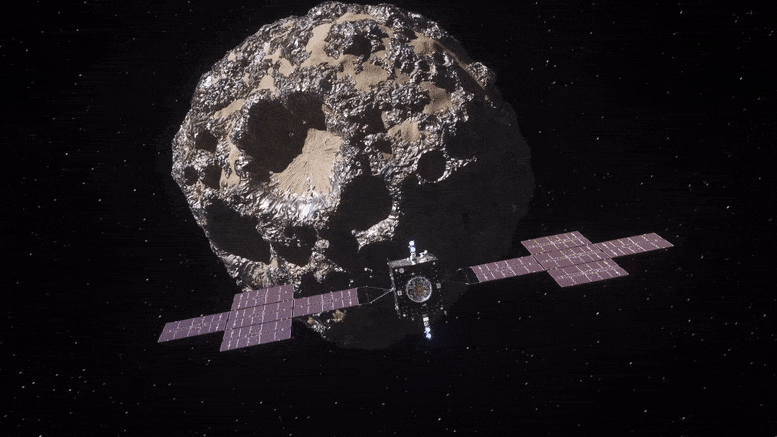
Another exciting asteroid research event awaits us in the fall of 2023. On September 24, the OSIRIS-REx (Origins Spectral Interpretation Resource Identification Security Regolith Explorer) spacecraft is scheduled to land in the zone of the US spaceport in Utah. There will be samples of soil extracted from the asteroid Bennu during the third mission New Frontiers, supervised by the University of Arizona and the Goddard Space Flight Center.
The asteroid Bennu can be as old as approximately 4.5 billion years, making it the best candidate to study the early chemical composition of matter in our solar system. In October 2020, OSIRIS-REx approached and collided at high speed with the asteroid’s surface. During its brief contact with Bennu, OSIRIS-REx was able to collect between 400 g and 2 kg of its steady rock with a special robotic TAGSAM bucket. After securing the samples in the cargo chamber, the probe headed to Earth.
Now that the OSIRIS-REx mission is coming to an end, humanity will have a great opportunity to shed light on the processes that took place at the very beginning of the formation of our solar system. The OSIRIS-REx and Psyche missions should undoubtedly be exciting developments in asteroid research this year. However, the most significant interplanetary mission of the year will be aimed at Jupiter.
JUICE: Ariane V latest mission
Some models of launch vehicles in 2023 are expected to renew their lineup. We are talking, in particular, about the Ariane 5 rocket produced by Arianespace, the last launch of which is scheduled for April 2023. The rocket will launch the JUICE (Jupiter Icy Moons Explorer) spacecraft, which aims to study Jupiter’s three icy moons – Europa, Ganymede, and Callisto – to find liquid water reserves under their icy cover. To search for them, JUICE will conduct spectral scans of the atmospheres and surfaces of the icy moons and map surface oceans that may contain organic life.
JUICE will be the ideological successor to the Galileo and Juno spacecraft sent to Jupiter’s planetary system earlier.
While Galileo’s life span ended in 2003, when the spacecraft was deliberately sent to collide with a gas giant at the end of its mission, the Juno probe continues its active research activities. On December 30, 2023, it will make a close flyby of Io, one of Jupiter’s satellites. During this flight, the space probe will also perform a gravitational orbital maneuver to approach Io again in February 2024.
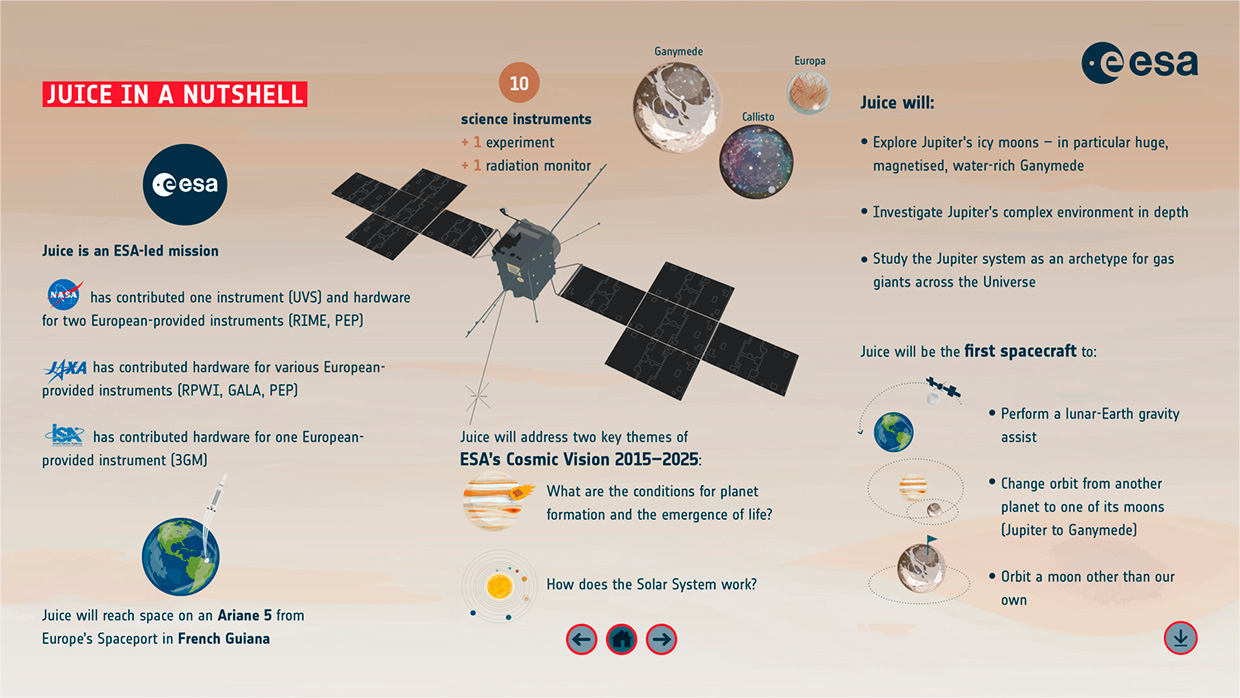
Today, the JUICE mission, although not yet launched, shows the main weaknesses of the Ariane 5 booster and the European Space Agency (ESA) in particular. Firstly, the rocket’s power is insufficient to launch a spacecraft to Jupiter along the shortest orbital trajectories. As a result, to reach the planetary system of the gas giant, the probe will take as long as eight years, during which JUICE will perform a series of gravitational orbital maneuvers in order to approach the study satellites with the most minor fuel consumption.
The new Ariane 6, which has been in development since 2014, could probably shorten JUICE’s long space journey. The rocket was supposed to debut back in 2020, but due to a number of circumstances, its launch has been continually postponed. The first Ariane 6 mission is scheduled for the end of 2023, which puts ESA in an extremely uncomfortable position because, after the launch of JUICE for more than six months, the agency will be left without its rockets for space missions.
The situation could have been remedied by the early commissioning of Vega-C (also manufactured by Arianespace). Still, after the rocket’s destruction during the first launch last December, its space missions were postponed indefinitely. A technical commission has now concluded that the accident was due to a dramatic drop in power in Vega-C’s engines.
While European officials are looking for replacement options, Arianespace experts continue to work hard to complete Ariane 6 as quickly as possible and fix the technical flaws in Vega-C. Hopefully, we will see the results of their work by the end of this year, when both rockets can finally record their first successful missions.
Private space missions with spacewalks
A number of private companies offering space and suborbital flights to customers are expected to resume their missions in 2023. Perhaps the new Polaris Dawn mission will be the most interesting on that list. It is overseen by billionaire Jack Isaacman, who already flew a private three-day suborbital mission in September 2021.
This time, the Polaris Dawn crew is ready to go one step further and offer its civilian crew a little head airing on the spacewalk planned as part of the mission. Polaris Dawn will launch in 2023 and will be the most distant human-crewed orbital mission in 50 years – the Crew Dragon spacecraft’s orbit will exceed 500 kilometers above Earth in some places, comparable to the altitude of the Hubble Space Telescope. The Polaris Dawn crew intends to study the effects of intense cosmic radiation on the human body. The mission is currently scheduled to launch in March 2023.
The Crew Dragon spacecraft, on which the Polaris Dawn crew will travel, is not the only solution for such commercial flights. Boeing is working intensively to complete its CST-100 Starliner, whose first uncrewed flight was successfully conducted in May 2022. Now it is the start of preparations for a manned Starliner launch, expected to deliver a batch of cargo and scientific equipment to the ISS in April of this year. Two NASA astronauts, Sunita Williams and Barry Wilmore will be honored to pilot the Starliner.
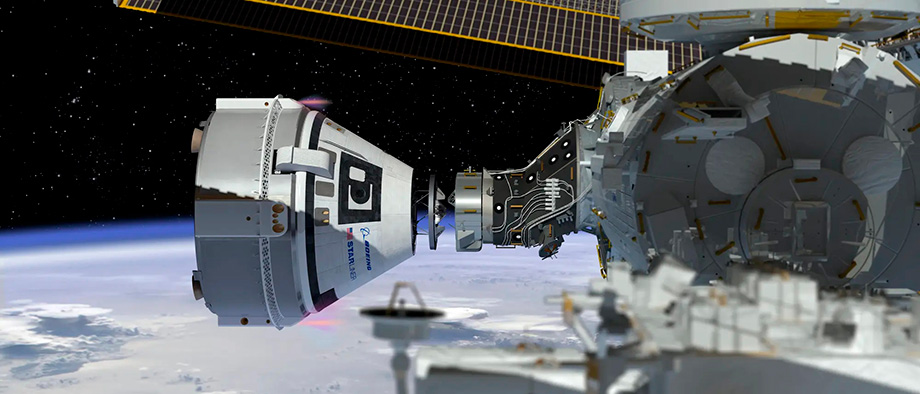
Blue Origin also aims to resume private suborbital missions with its launch vehicle, New Shepard. To date, Blue Origin has had six successful crewed suborbital missions on its rocket, which has crossed the Karman Line (a.k.a. Linia Karmana, 100 km above sea level). However, the failure of the rocket’s unmanned mission last September made a difference.
The Federal Aviation Administration (FAA) suspended the license allowing Blue Origin to conduct manned missions after the failure. Most likely, the situation will be resolved this year, and we will see new launches of New Shepard by the second half of this year.
Rising interest in the moon
This year, the commercial sector not only set its sights on the conquest of the Earth orbit but also turned its attention to our planet’s satellite. At the end of April, the Japanese lunar module Hakuto-R, designed by iSpace and launched on December 11, 2022, on a Falcon 9 Block 5 rocket, will land near the Atlas lunar crater.
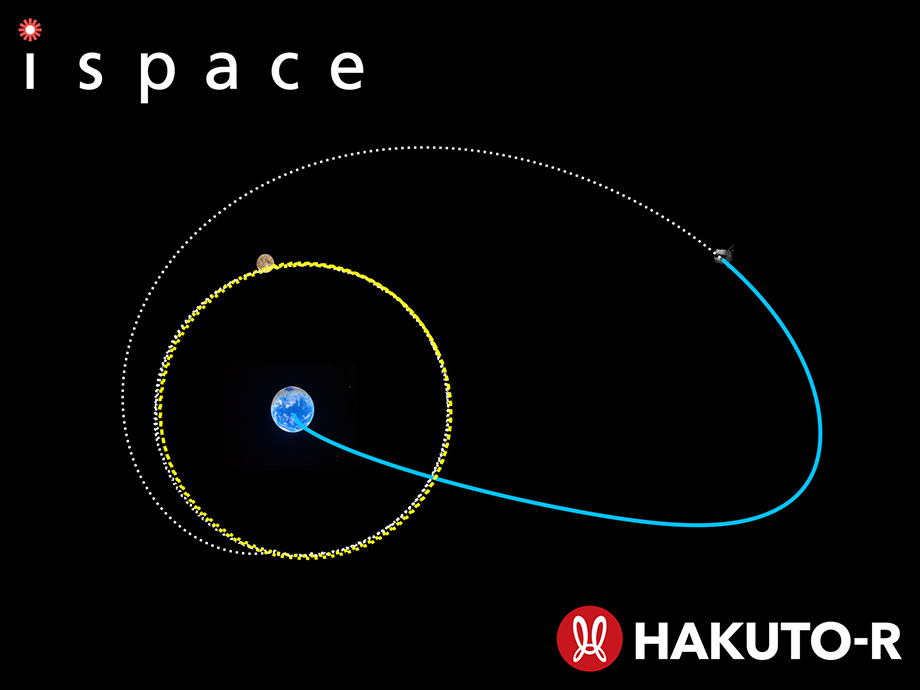
After landing, the Hakuto-R landing module will unload payloads, including government and private cargo, onto the surface of the Earth’s satellite. The module carries the UAE-made Rashid lander and a robotic lunar module made by JAXA and Tomy SORA-Q.
The American-made lunar module, Nova-C by Intuitive Machines, will likely be sent to the lunar surface in March this year. The spacecraft has an intrinsic thrust of 4,000 N, provided by its VR900 propulsion system running on a mixture of methane and liquid oxygen.
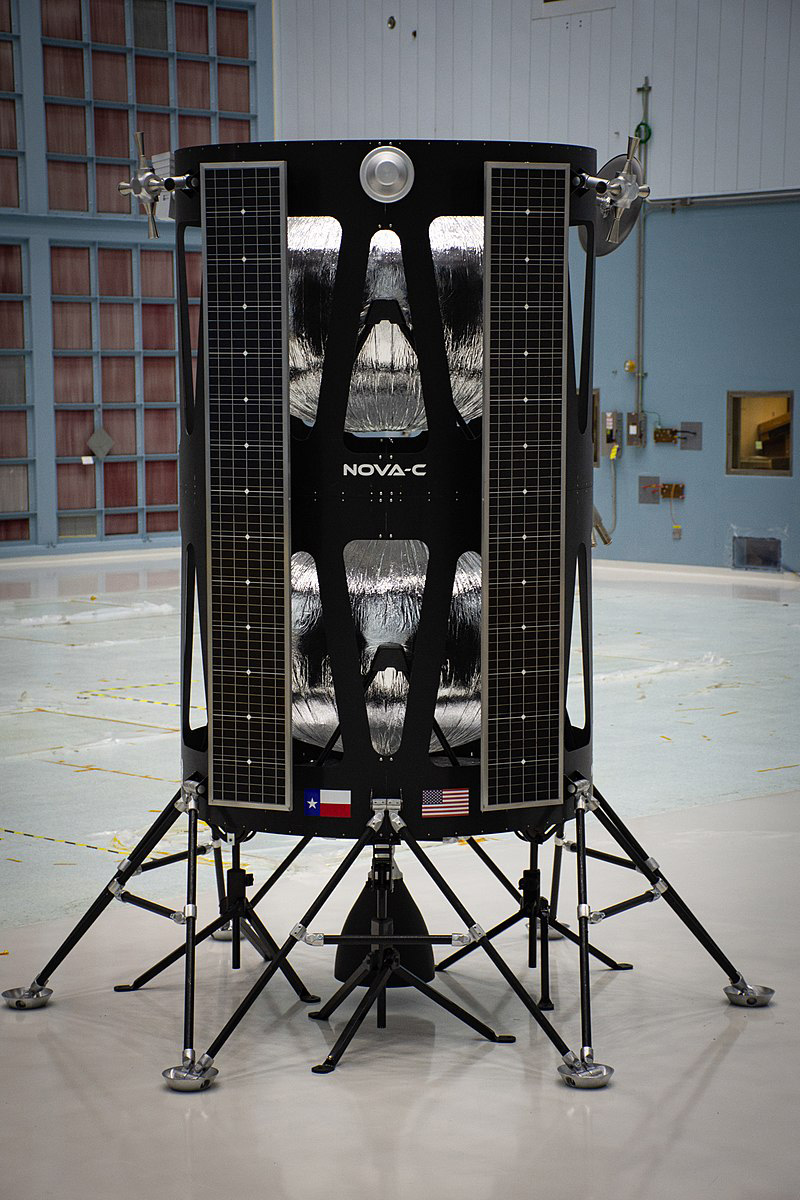
Source: NASA/Goddard/Rebecca Roth
The Nova-C mission is part of the Commercial Lunar Payload Services (CLPS) program, which aims to demonstrate the delivery of commercial payloads to the moon, some of which will be used for future Artemis lunar missions.
By approximately June 2023, the Indian lunar landing module Chandrayaan 3 will first attempt to reach the Moon’s surface. The vehicle is currently at the assembly stage. Its launch will take place from the Satish Dhawan Space Center launch pad. To send Chandrayaan 3 to the Moon’s surface, India plans to use the resources of a three-stage medium-lift LVM 3 launch vehicle.
2023 will definitely be the year of active lunar exploration. More and more often, it is the commercial sector of NewSpace that competes with each other in this race. We intend to follow the outcomes of these missions closely and will return to them more than once in our future materials.




